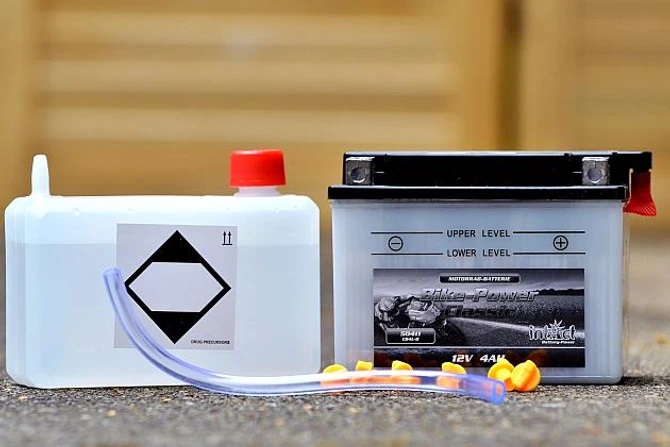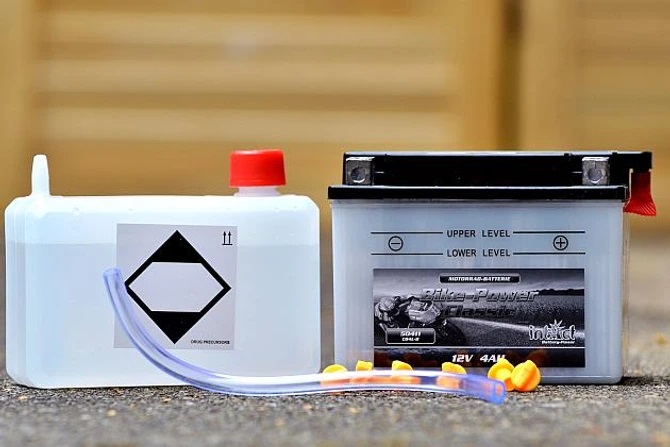How to Take Care of Your Battery and Batteries in Winter

Whether the batteries in the technology are used to power it or just to start the engine, especially in winter we must not neglect them, because in the spring we may have unpleasant surprises.
It is not only in gardening technology that various types of batteries are increasingly used. They can also be found in e-bikes, and are also used to power electric scooters or quads. Batteries power some electric mowers, saws and other tools. These are often more or less seasonal machines that you clean in the garage or throw over the winter and "pull" them out in the spring. However, if you forget to take proper care of the battery, it is more than likely that it will "die" during the winter.
Today, lead batteries or the more modern lithium batteries are most commonly used. There are several important differences between them. Lead-acid batteries are heavy, but cheaper than lithium batteries. On the other hand, lithium batteries with lighter weight and smaller dimensions retain a large amount of energy, making them more suitable for powering e-bikes, small cordless tools, etc. Unfortunately, these advantages are offset by the higher price.
However, these two types of batteries have one thing in common. They hate deep discharge. As a rule, it is enough to discharge a lead-acid battery several times and you will immediately feel that it does not hold as much energy as before. Simply put, it will unload faster. And if you leave it discharged for a long time, the battery will not drain at all loads. After all, it's nothing new, all drivers are well aware that the battery is easily damaged in a car they leave parked for a while, and in winter it pays twice as much.
Lithium batteries even require a single discharge below a certain limit and will be permanently damaged . Therefore, they are usually equipped with electronics that control the charging and discharging process and, at the same time, usually disconnect them before the discharge occurs below an acceptable level.
In any case, both types of batteries must be kept charged. Consider the so-called self-discharge effect, when the voltage on the battery slowly drops, even when you are not using it. Although the self-discharge effect of lithium batteries is relatively low, we do not recommend ignoring it.
Batteries in the HECHT EQUIS electric scooter
No one will be happy if in the spring he drives, for example, an electric scooter, which in the autumn managed to travel tens of kilometers on a single charge, and in the spring you can barely drive it past the gate. The purchase price of a new battery can often be close to half the original price of the entire machine. Therefore, it definitely pays not to neglect anything.
Therefore, always store batteries in frost-protected areas . If you can't park the whole big machine in such places, it's definitely worth taking out at least the battery and putting it over the heat. Batteries should be checked at least once a month and recharged if necessary. However, always use only chargers recommended by the manufacturer for charging. At the same time, follow the recommended procedures for charging. This is because dangerous types of lead-acid batteries can be released when charging certain types of lead-acid batteries, so they can only be charged in well-ventilated areas.
And how is it with you? Do you happen to have a winterized machine somewhere, where it would be necessary now to preemptively check and possibly charge the battery?


